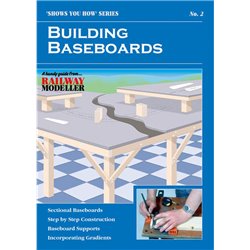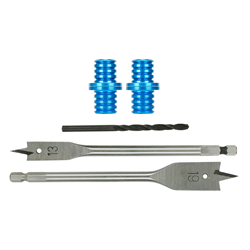Generally, plastic model plane kits do not come with plinths supplied. Nowadays, the majority of kits are designed to...
No products
Product successfully added to your shopping cart
There are 0 items in your cart. There is 1 item in your cart.
Search Tips
Christmas and New Year
We are dispatching orders every weekday apart from Christmas Day, Boxing Day and New Year's Day.
If you order is time critical, select next day delivery at checkout.
The shop in Sandown is closed from 25th December, reopening on 30th December.
What are the best materials to use to construct the baseboard for my first layout ?
When it comes to constructing the baseboard for a model railway layout, there are a few materials that are commonly used and recommended for their durability and ease of use. The choice of materials will depend on the personal preferences of the modeller, their budget and the size of the layout. Here are some popular options:
- Plywood : Plywood is a versatile and widely used material for baseboard construction. It is sturdy, relatively inexpensive, and readily available in various thicknesses. Opt for a thickness of around 12mm (1/2 inch) for a solid baseboard. Plywood can be easily cut to size and provides a stable foundation for a layout.
- Extruded polystyrene foam (XPS) : XPS foam is a lightweight and easy-to-work-with material that is popular among model railway enthusiasts. It is available in large sheets and can be easily cut, shaped and carved to create different terrain features such as embankments, hills and cliff faces. XPS foam also has good insulation properties, which can help reduce noise and vibrations.
- MDF (medium density fibreboard) : MDF is a dense and smooth material that provides a solid base for a layout. It is less prone to warping compared to plywood and offers a smooth surface for track laying and scenery construction. However, MDF can be heavier than other options, so consider this if future portability is a factor. It also needs to be sealed otherwise any moisture will make it bulge.
- Cork mats or sheets : Cork is a great material to use for the foundations of a track bed. It is light, relatively cheap and ca be easily cut to shape to match the intended track plan. It has noise and vibration dampening qualities which are useful factors to consider if the layout is to be operated in areas where other people will be present.
Regardless of the materials chosen, it is important to reinforce the baseboard to prevent sagging over time. Adding support beams or cross-bracing underneath the baseboard can help distribute the weight evenly and ensure a stable foundation.
Remember, the choice of baseboard material ultimately depends on the specific needs and preferences of the individual modeller. Other factors such as budget, layout size and personal skill level will also need to be considered when making any decision. Happy modelling!
Click here to receive the tips weekly in your mailbox. You can unsubscribe at any time.










